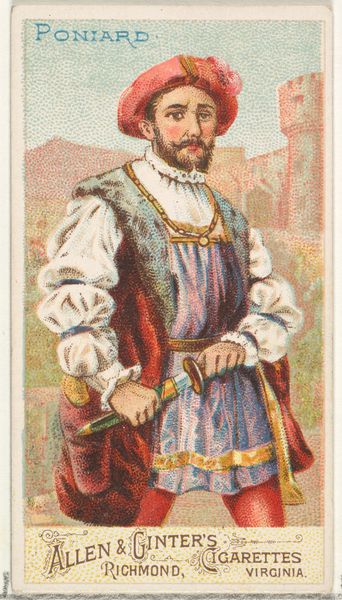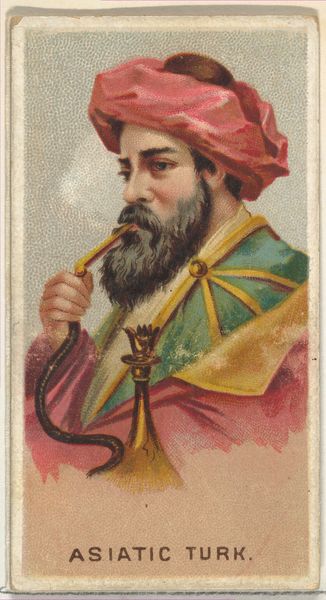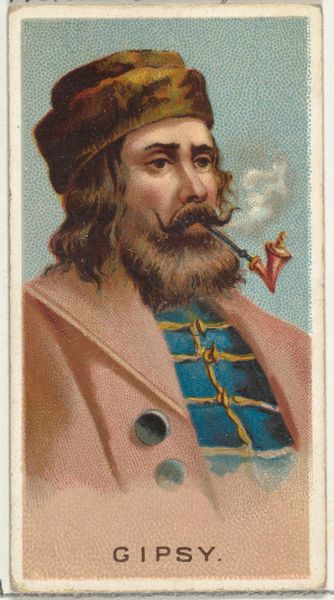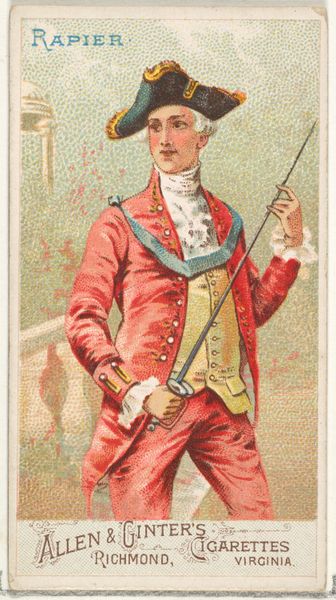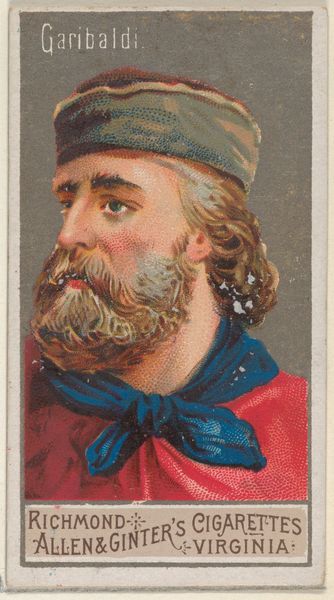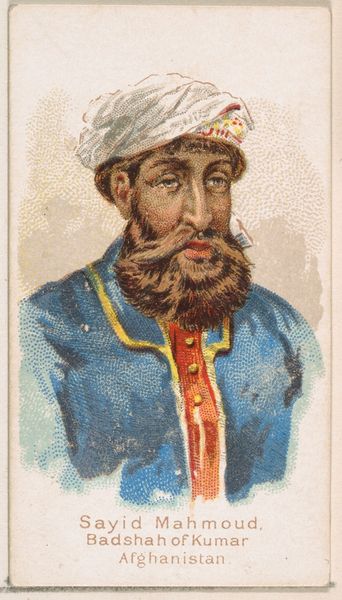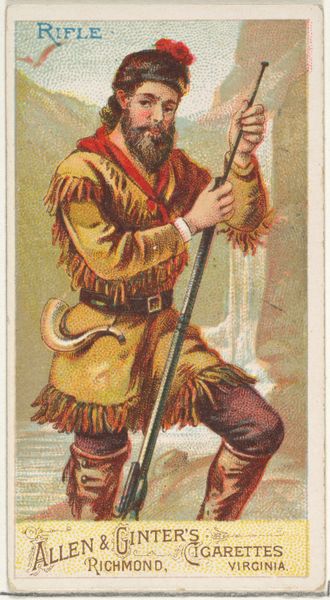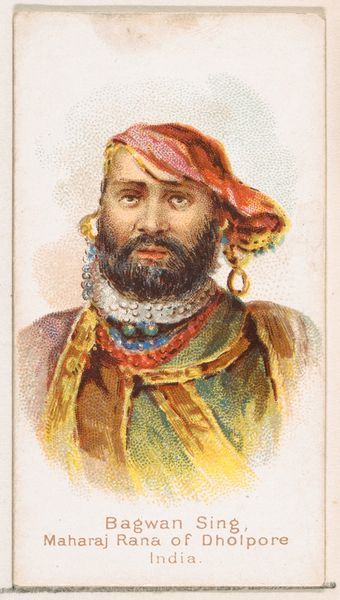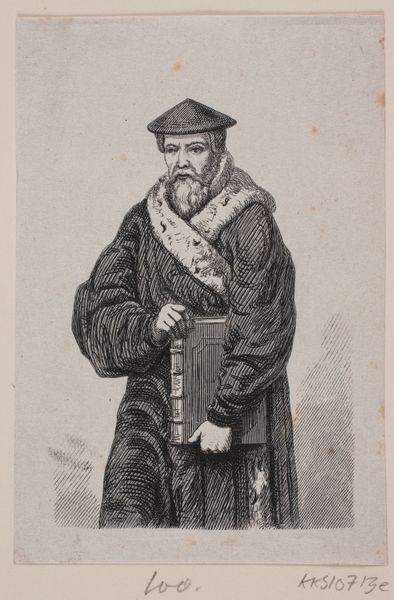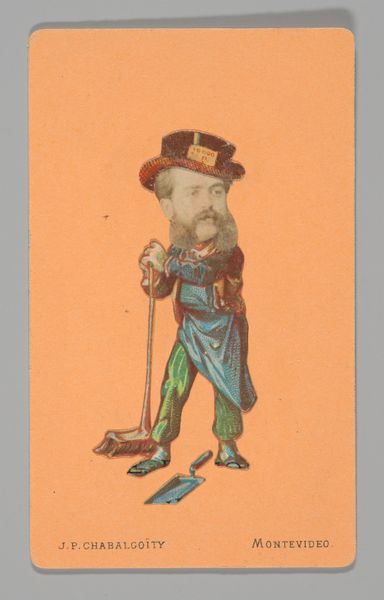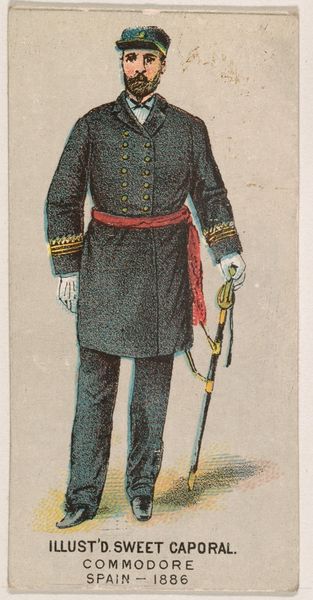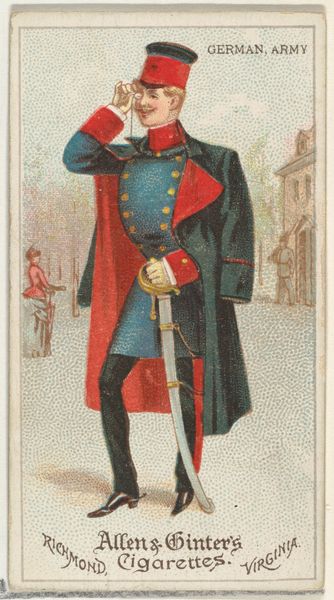
Halberd, from the Arms of All Nations series (N3) for Allen & Ginter Cigarettes Brands 1887
0:00
0:00
drawing, print
#
portrait
#
drawing
#
weapon
#
pictorialism
# print
#
caricature
#
caricature
#
men
#
genre-painting
Dimensions: Sheet: 2 3/4 x 1 1/2 in. (7 x 3.8 cm)
Copyright: Public Domain
Curator: Immediately, the color palette grabs me—that rich, saturated red set against the beige background has such graphic appeal. Editor: I can't help but find a certain irony here. We’re looking at "Halberd," a collectible card from Allen & Ginter’s "Arms of All Nations" series, circa 1887, a product designed to sell cigarettes through exotic imagery related to global militarization and power. The absurdity of associating lethal weaponry with smoking is remarkable. Curator: Agreed, there's a jarring juxtaposition, but let’s appreciate the craftsmanship. The precise linework and subtle shading render the details of his ornate uniform with a surprising realism for such a small print. Consider, for instance, the geometric arrangement of the figure, the careful symmetry, and the intricate articulation of his ruffled collar. Editor: But shouldn’t we also consider what is unsaid? This man, idealized, becomes a stand-in for imperial might—obscuring the real violence inflicted upon colonized peoples during this era. These objects often reinforce, not critique, systems of power and exploitation, particularly during periods of rapid industrialization. The sets were extremely popular with children at the time. Curator: Perhaps, but look at the composition itself. The subject matter seems almost incidental to the careful attention paid to creating texture. Think of the halberd head itself: the interplay of curved and sharp planes! Or consider how light renders the volume of his face in subtle gradients, a feat of design meant to draw the eye and make one want to own this print. Editor: Indeed, it’s expertly designed to evoke a sense of prestige and exoticism. However, it's essential to ask *who* benefits from this aestheticization of weaponry and who is erased or harmed. In this particular case, these seemingly innocent collectables normalized violence by incorporating them as elements to be exchanged and owned, thereby shaping and sanitizing attitudes. Curator: Fair point. Perhaps focusing exclusively on the compositional mastery ignores its socio-political purpose and reach, but considering all design serves certain aims makes room for us to discuss these dynamics in full. Editor: Exactly. This card exemplifies how cultural objects operate within power structures, consciously or otherwise shaping perceptions. They should, therefore, be viewed in a broader social, and in this case imperialistic, context.
Comments
No comments
Be the first to comment and join the conversation on the ultimate creative platform.
